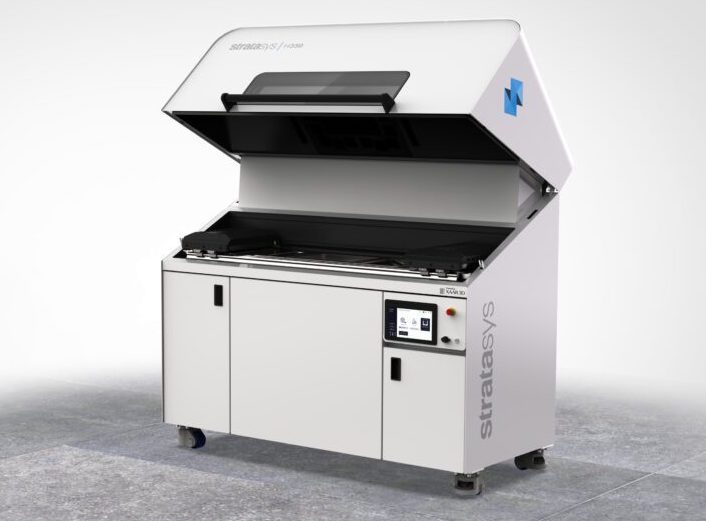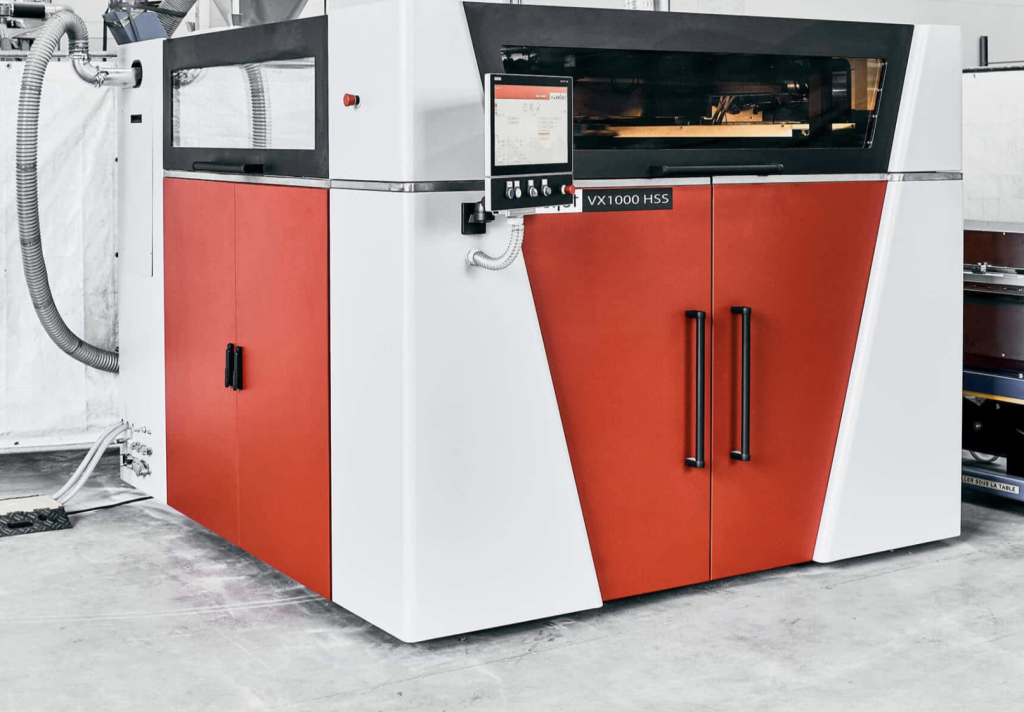Industrial 3D printer manufacturer Stratasys has announced the acquisition of all remaining shares in inkjet printhead developer Xaar PLC’s High Speed Sintering (HSS) subsidiary Xaar 3D Ltd.
Having already owned 45% of Xaar 3D, Stratasys has now taken full control of a firm that it has worked with to integrate Selective Absorption Fusion (SAF) technology into its H Series machines. SAF is designed to provide adopters in the consumer, automotive and electronics sectors with high-throughput capabilities, thus Stratasys says the move will “accelerate its growth in production-scale 3D printing.”
“We have been able to significantly improve thermal management for more consistent and reliable parts while giving customers the production control they need,” said Ronen Cohen, GM of Xaar 3D Ltd. “As part of Stratasys, we will continue to rapidly advance H Series 3D printer development, while leveraging Stratasys’ global go-to-market infrastructure and blue-chip customer relationships.”
“WE FORMED XAAR 3D ON THE PREMISE THAT WE COULD HELP EXISTING POWDER BED TECHNOLOGY MAKE A MAJOR LEAP FORWARD, AND THAT’S WHAT’S HAPPENING THANKS TO SAF.”

Xaar 3D’s HSS technology
Operating from its HQ in Cambridge, UK, Xaar PLC may be best known as a manufacturer of inkjet technologies, but it also has a background in HSS. Having opened a dedicated 3D printing hub in 2016, the firm appointed the inventor of HSS, Professor Neil Hopkinson, as its Director, with the aim of developing new materials for the technology and better ways of marketing it.
For two years after this, the company continued to seek out ways of industrializing the technology, initially working with BASF in an effort to achieve this, before establishing Xaar 3D Limited alongside Stratasys. The new entity was awarded full rights to Hopkinson’s HSS approach, and although Stratasys only took an initial 15% stake in the firm, it increased its share to 45% and gained a takeover option in 2019.
With this increased stake came closer collaboration between the companies, and Stratasys announced the development of its SAF technology in March 2021. Based on Xaar 3D’s HSS approach, SAF essentially involves selectively jetting an infrared (IR)-sensitive binder onto a polymer powder bed, before an IR lamp is used to fuse these particles together into layers.
By performing these steps in the same direction across the powder bed, SAF exposes all parts produced to the same level of thermal energy, giving them consistent qualities no matter where they’re placed. The process is also said to enable extremely high throughputs, thus Stratasys has identified it as having industrial potential, and committed to fitting it to each of its H Series 3D printers.
As its first SAF-equipped machine, Stratasys’ H350 3D printer was launched in Q2 2021, to enable manufacturers to scale their businesses via the volume production of end-use quality parts. In particular, the company has marketed its system as a way of allowing adopters to ‘take control’ of their processes, by using its sensors to collect data, which can then be deployed to configure it to meet their needs.
Due to the consistently-finished parts it produces, Stratasys the H350 is said to be ideal for producing consumer products like clips, eyewear, electronic cases or earphones, as well as more robust load-bearing components such as jigs, adapters and manifolds.
Currently, the machine is compatible with a variety of polyamide and elastomeric powders, including Stratasys’ proprietary impact-resistant PA11, which is 100% bio-based. At RAPID + TCT, the company also announced plans to launch a new PA12 for the H350 in 2022, which is said to be characterized by both high dimensional stability and chemical resistance, making it useful for creating industrial tooling.
Thus far, the H350 has been installed at Stratasys Direct Manufacturing in addition to beta sites across Europe and the U.S. With the machine expected to be made generally available later this year, Stratasys says that initial adopters are already reaping the benefits of SAF technology, while its full acquisition of Xaar 3D will allow its team to “continue leading the development of the H Series platform.”
“Customers tell us this technology’s consistent performance at higher volumes helps them grow their businesses and provides them a significant competitive advantage,” said Stratasys CEO Dr. Yoav Zeif. “We are excited to welcome the outstanding team of innovators from Xaar 3D to the Stratasys family.”
“WE ARE COMMITTED TO BEING THE LEADING PROVIDER OF PRODUCTION-SCALE POLYMER 3D PRINTING FOR OUR CUSTOMERS AS ADDITIVE MANUFACTURING CONTINUES TO TRANSFORM INDUSTRIES AROUND THE WORLD.”

Stratasys’ HSS competitors
Although Hopkinson is credited as the inventor of HSS, Xaar 3D is not the only company known to be developing the technology, and voxeljet unveiled its first HSS system back in 2017. At the time, the company stated that the technology was “more productive than other AM processes,” and it now markets HSS-powered VX200 and VX1000 machines.
Although its process differs slightly from HSS, HP’s Multi Jet Fusion (MJF) technology is also inkjet-based, and is said to yield parts with similar properties and a comparable level of surface finish. As a result, MJF is deployed far and wide across the 3D printing industry, from western service providers like Protolabs to Indian and Australian manufacturers.
Just like HSS, MJF is also the subject of continual upgrades, such as the automated post-processing systems being developed by HP alongside AM Solutions. Announced at Formnext in 2019, the upcoming machinery is set to significantly improve the refinement and stability of parts produced using MJF 3D printers.
Learn more from the original article here.
Related Articles:















